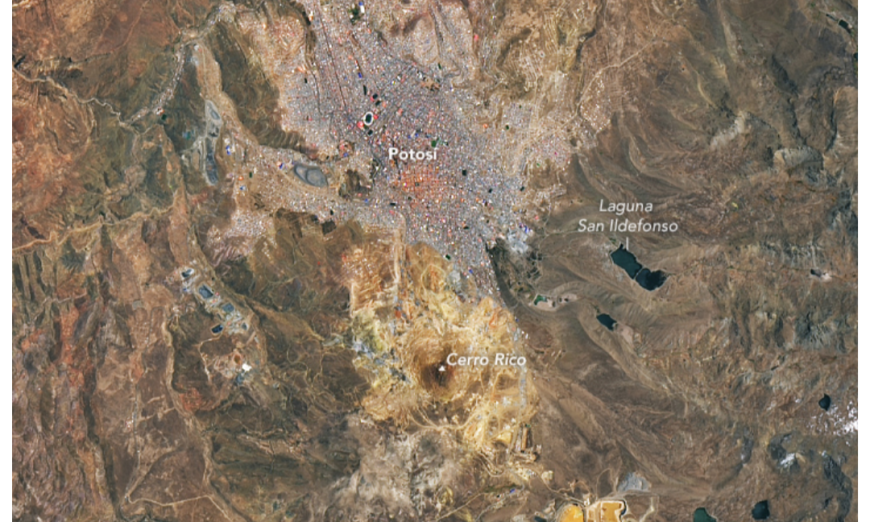November 24, 2022.
At an elevation of more than 4,000 meters (13,000 feet) in the Bolivian Andes, Potosí is one of the highest cities in the world.
Higher yet is the adjacent Cerro Rico (Spanish for “rich mountain”). The city and nearby mountain are also known for their long relationship with silver.
Miners began extracting silver ore from the mountain starting in the 16th century, providing a legendary source of currency for the Spanish Empire.
At the time, the mine was considered the world’s largest industrial complex and supplied most of the world’s silver—creating a source of wealth that helped shape a global economy.
The Operational Land Imager (OLI) on Landsat 8 acquired this image of Potosí and Cerro Rico on November 24, 2022. In this view, the city’s close relationship with mining is apparent; built structures are visible up to the base of the mountain, and several tailings ponds are visible to its south.
Cerro Rico is an extinct volcano that developed in the Miocene along a belt of tin and silver. The mountain later eroded, exposing a core that remained riddled with veins of silver. Relatively easy access to these veins prompted the rapid growth of mining. Production peaked in the late 1500s, at which time there were more than 600 mines on the mountain. By the 20th century, tin and zinc were being mined at the mountain.
Potosí has been designated a UNESCO world heritage site given its historical economic significance and its preservation of past industrial production. But reports indicate that hundreds of years of mining have left the mountain unstable, and it is slowly sinking and collapsing amid other environmental degradation.
UNESCO writes on their website: “The authenticity of the property is thus threatened, and urgent and appropriate action must be taken to protect human lives, to improve working conditions and to prevent further deterioration of this vulnerable component of the property.”
NASA Observatory image by Lauren Dauphin, using Landsat data from the U.S. Geological Survey. Story by Kathryn Hansen.
Source, NASA.

